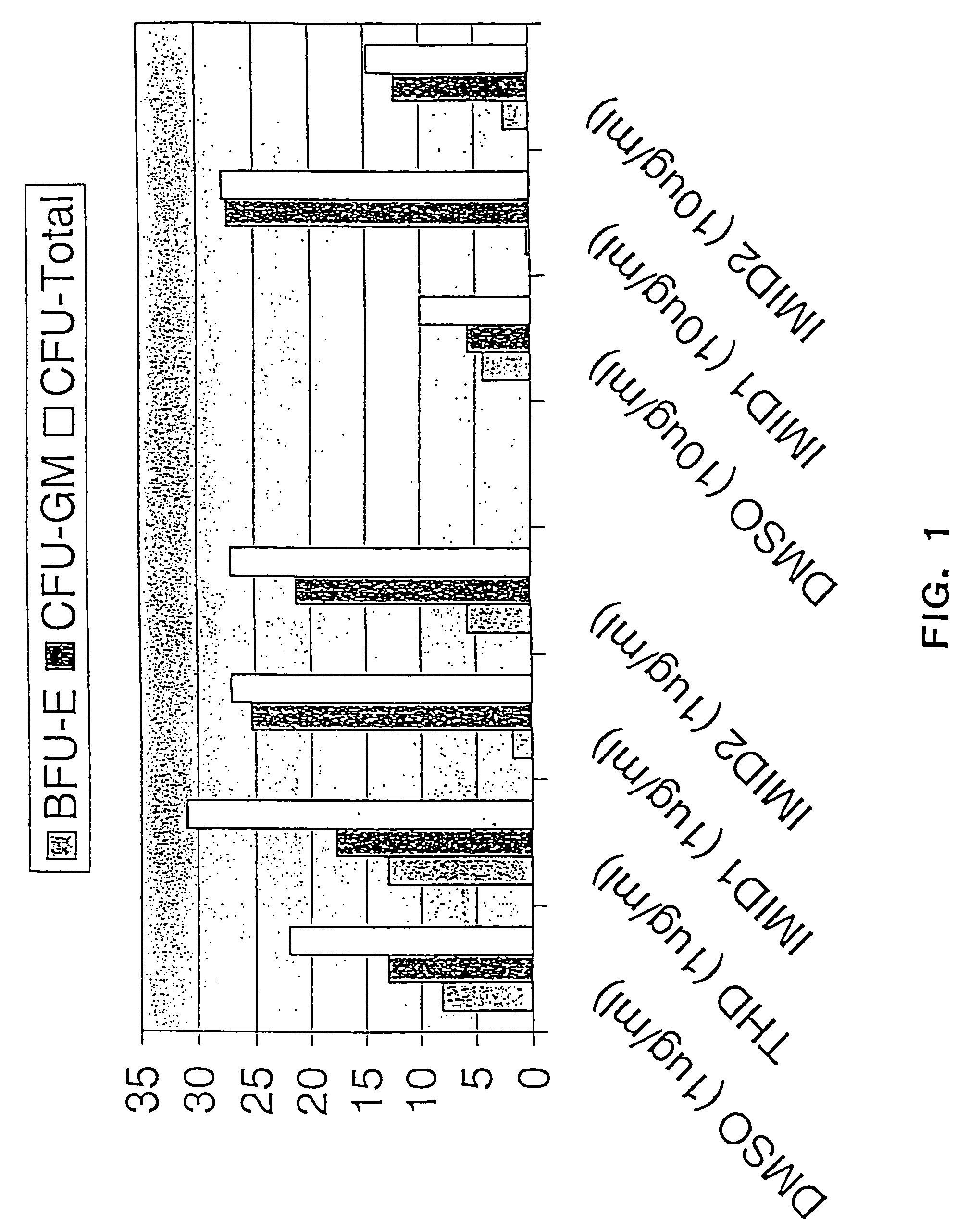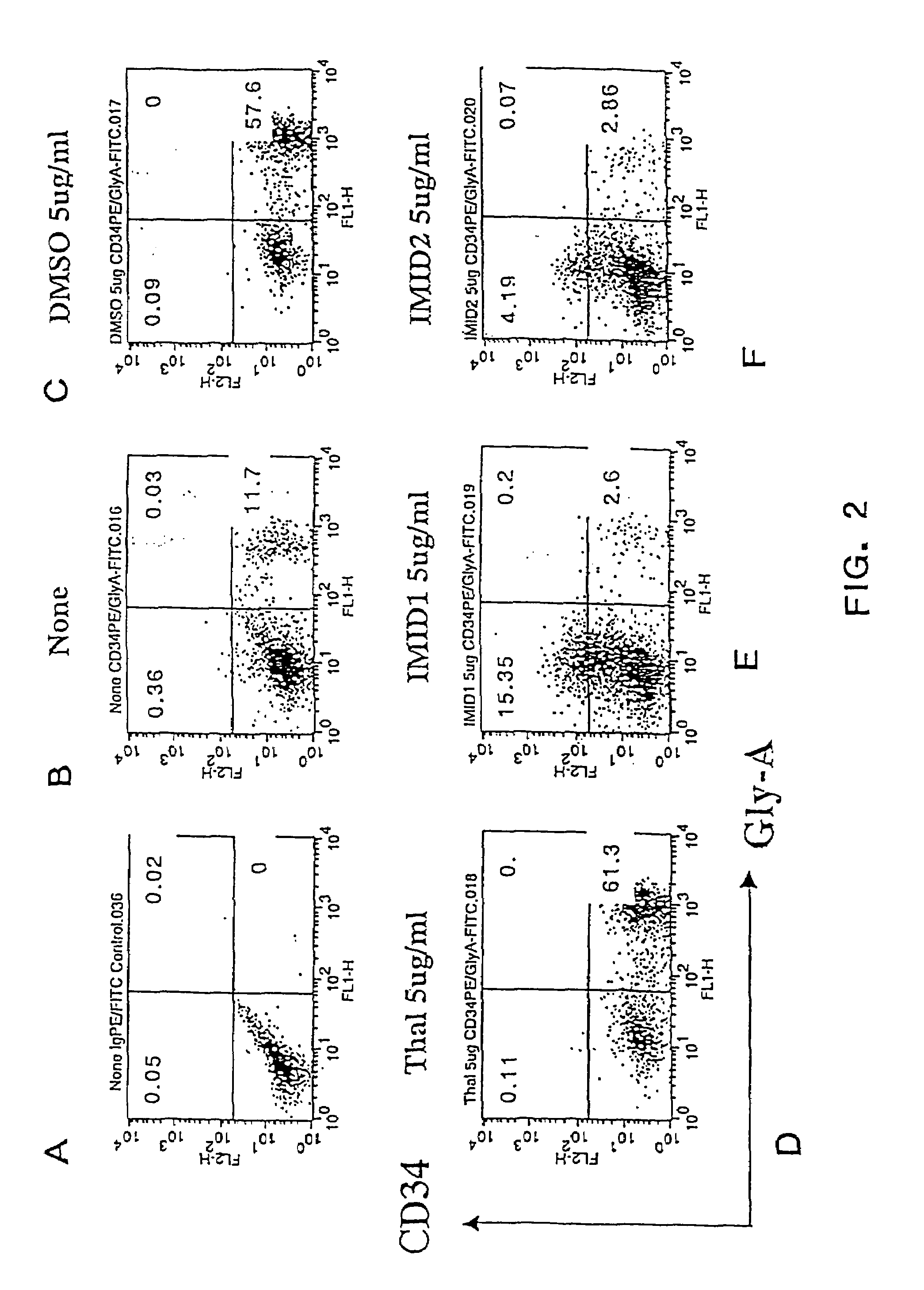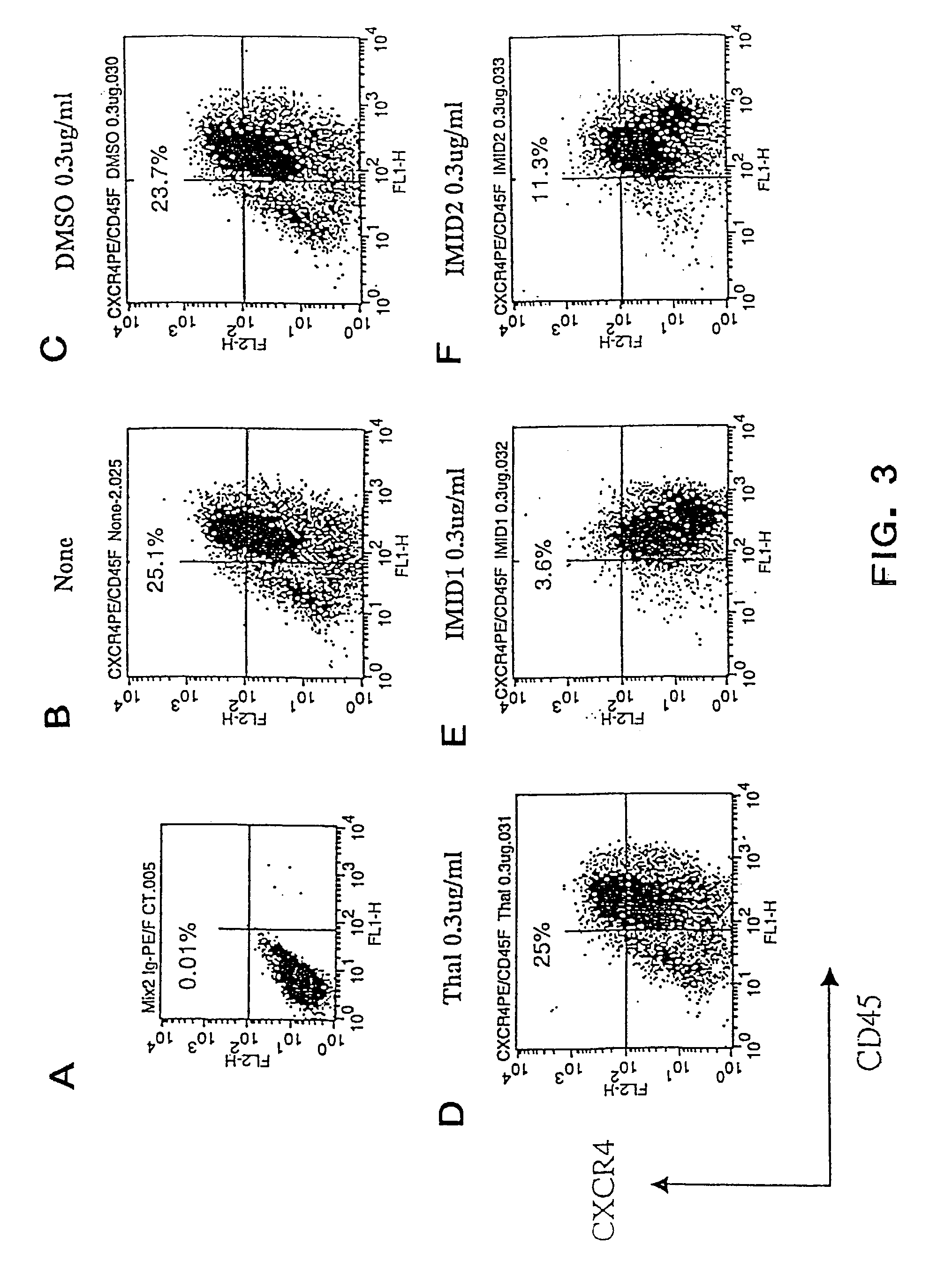Modulation of stem and progenitor cell differentiation, assays, and uses thereof
a progenitor cell and differentiation technology, applied in the field of stem and progenitor cell differentiation, can solve the problems of crude and unregulable existing methods of modulating the differentiation of stem cells and progenitor cells, and the difficulty of controlling or regulating the differentiation of stem cells and progenitor cells, and achieve the effect of modulating their differentiation
- Summary
- Abstract
- Description
- Claims
- Application Information
AI Technical Summary
Benefits of technology
Problems solved by technology
Method used
Image
Examples
working examples
6. WORKING EXAMPLES
6.1. Example 1
Effects of Thalidomide, ACTIMID™ and REVIMID™ on Differentiation of CD34+Progenitor Cells
[0299]In the following example, the effects of Thalidomide (Thal), ACTIMID™(“ACTIMID™”) and REVIMID™ on the differentiation of CD34+ (hematopoietic progenitor) cells and the generation of colony forming units (CFU) were studied. Significantly, the results demonstrate that ACTIMID™ and REVIMID™ can be used to suppress specifically the generation of erythropoietic colonies (BFU-E and CFU-E), while augmenting both the generation of leukocyte and platelet forming colonies (CFU-GM) and enhancing total colony forming unit (CFU-Total) production.
[0300]The methods of the invention can therefore be used to regulate the differentiation of stem cells, and can also be used to stimulate the rate of colony formation, providing significant benefits to hematopoietic stem cell transplantation by improving the speed of bone marrow engraftment and recovery of leukocyte and / or plate...
example 2
6.2. Example 2
Effects of Thalidomide, ACTIMID™ and REVIMID™ on Proliferation and Differentiation of Human Cord Blood CD34+ Cells
[0303]In the following example, the effects of Thalidomide, ACTIMID™ and REVIMID™ on the proliferation and differentiation of cord blood (CB) mononuclear cells into CD34+ (hematopoietic progenitor) cells were studied. Cord blood mononuclear cells are a mixed population of cells including a small population of hematopoietic progenitor (CD34+) cells. A subset of this small CD34+ cell population includes a population (approximately 1% of total CB mononuclear cells) of CD34+CD38+ cells and an even smaller population (less than 1% of total CB mononuclear cells) of CD34+CD38− cells. Significantly, the results demonstrate that ACTIMID™ causes an up-regulation (increased differentiation) of CD34+ cells, and that ACTIMID™ and REVIMID™ can apparently inhibit or slow down the differentiation of hematopoietic stem cells or progenitor cells compared with the positive an...
example 3
6.3. Example 3
Effects of ACTIMID™ and REVIMID™ on Human Cord Blood MNC Cells
[0316]In the previous examples, ACTIMID™ and REVIMID™ were shown to significantly down-regulate the expression of CXCR4 in cord blood CD34+ cells and to increase the CD34+CD38− cell population. In this example, ACTIMID™ and REVIMID™ are shown to have similar activities on cord blood mononucleated cells (MNC).
[0317]6.3.1. Materials and Methods
[0318]Cord blood MNCs that had been cryopreserved and thawed using standard methods were isolated by standard Ficoll separation method and cultured in 24 well-plate at 0.5×106 cells / ml in 20% FCS-IMDM with cytokines (IL6, KL and G-CSF 10 ng / ml each) in triplicates. The experimental groups were None (cytokines only), DMSO (1.7 μl), ACTIMID™ (5.0 μg in 1.7 μl DMSO), REVIMID™ (5 μg in 1.7 μl DMSO). The cultured cells were harvested and analyzed by FACS staining after 1 week of culture. The results are summarized in Table 2 and in FIGS. 8-12. The data are expressed as an ave...
PUM
| Property | Measurement | Unit |
|---|---|---|
| concentration | aaaaa | aaaaa |
| concentrations | aaaaa | aaaaa |
| concentrations | aaaaa | aaaaa |
Abstract
Description
Claims
Application Information
 Login to View More
Login to View More - R&D
- Intellectual Property
- Life Sciences
- Materials
- Tech Scout
- Unparalleled Data Quality
- Higher Quality Content
- 60% Fewer Hallucinations
Browse by: Latest US Patents, China's latest patents, Technical Efficacy Thesaurus, Application Domain, Technology Topic, Popular Technical Reports.
© 2025 PatSnap. All rights reserved.Legal|Privacy policy|Modern Slavery Act Transparency Statement|Sitemap|About US| Contact US: help@patsnap.com



